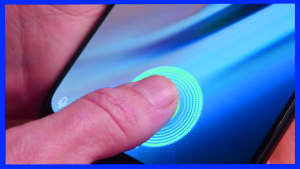

Ultrasonic fingerprint sensors:
Here’s a detailed explanation of how they work:
- Transmitter and Receiver Array: The ultrasonic sensor consists of a small array of ultrasonic transmitters and receivers, typically embedded beneath the display glass or within a designated area on the device.
- Ultrasonic Pulse Generation: When the user places their finger on the designated area of the screen, the sensor emits a series of ultrasonic pulses. These pulses are usually in the range of 20 to 40 kHz, which is beyond the range of human hearing.
- Reflection and Refraction: The ultrasonic pulses propagate through the glass or surface of the display. When they encounter the ridges, valleys, and pores of the user’s fingerprint, they undergo reflection and refraction.
- Time-of-Flight Measurement: The sensor measures the time it takes for the ultrasonic waves to travel from the transmitter to the fingerprint’s surface and back to the receiver. This time-of-flight measurement is incredibly precise, often in the range of nanoseconds.
- Creating a 3D Image: Based on the time-of-flight data collected from multiple points on the fingerprint’s surface, the sensor constructs a detailed 3D map of the fingerprint. This map includes information about the unique features, such as ridge patterns and minutiae points.
- Authentication: The captured fingerprint data is compared to the stored fingerprint template. If the match is within an acceptable threshold, the device grants access to the user.
- Secure Processing: To enhance security, the device typically processes the fingerprint data within a secure enclave or dedicated hardware module, safeguarding it from unauthorized access.
Advantages:
